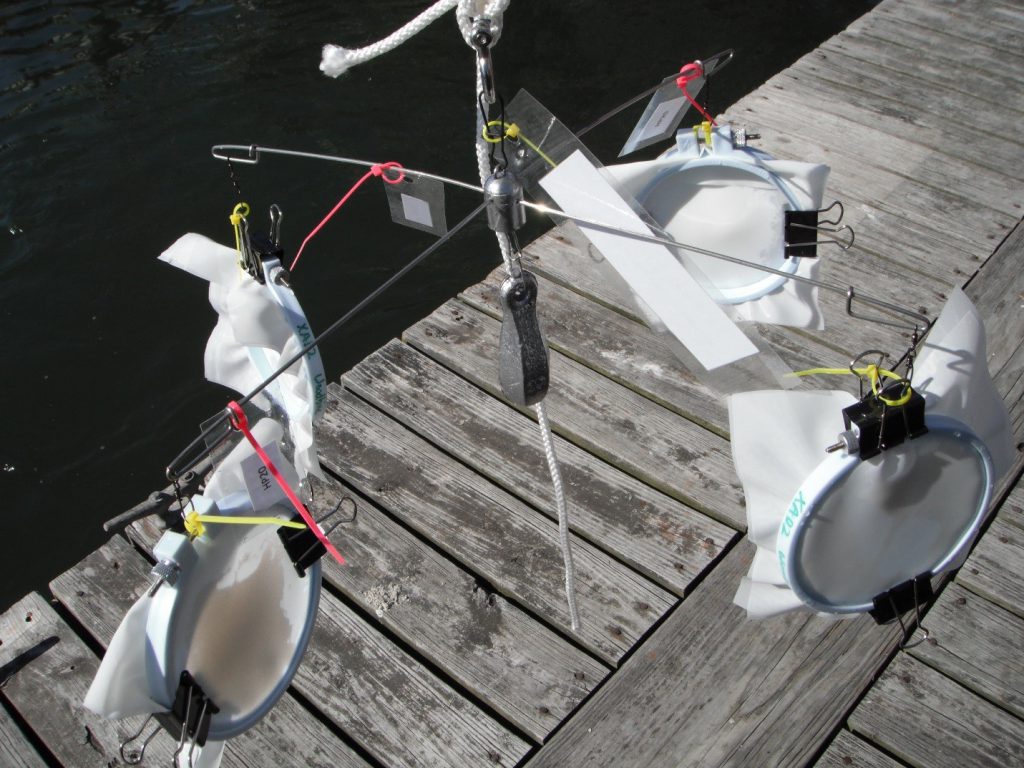
As harmful algal blooms and related human health concerns increase, there is a growing need to identify and test technologies that may improve existing monitoring programs. An NCCOS-funded study published in the journal Marine Drugs evaluated promising technologies to detect toxins linked with recurrent Alexandrium and Dinophysis blooms off of Long Island, New York. These algae are capable of producing toxins that can result in paralytic and diarrhetic shellfish poisoning (PSP and DSP), respectively, in people who eat contaminated shellfish.
The study assesses the use of solid-phase adsorption toxin tracking (SPATT) with two types of toxin-adsorbing resin (HP20 and XAD-2) to detect saxitoxin linked to PSP and multiple toxins linked to DSP, including okadaic acid and dinophysis toxins, and another co-occurring toxin, pectenotoxin. Cell densities of Alexandrium and Dinophysis were compared with their respective PSP and DSP toxin class amounts. Toxins were measured in phytoplankton samples, blue mussels (a commonly used bivalve indicator species), and in SPATT sampling devices. The study documented a comparison of different extraction protocols and toxin detection methods, including liquid chromatography/mass spectrometry and the protein phosphatase inhibition assay (PP2A). These results were also compared with those from the mouse bioassay method, the regulatory standard of most U.S. shellfish monitoring programs.
The study demonstrated that the HP20 SPATT samplers coupled with toxin detection using PP2A were well suited for detection of DSP toxins and could provide early warning sufficient to prevent DSP illnesses from consumption of contaminated shellfish. The SPATT methods tested did not provide useful data for PSP monitoring in this region. The study offers important insights on new field and laboratory technologies that could enhance the ability of monitoring programs to address harmful algal blooms and assure shellfish produced and sold are safe for consumers.
An NCCOS Monitoring and Event Response for Harmful Algal Blooms (MERHAB) project primarily supported this study along with an Ecology and Oceanography of Harmful Algal Blooms (ECOHAB) project.
For more information, contact Marc.Suddleson@noaa.gov.
